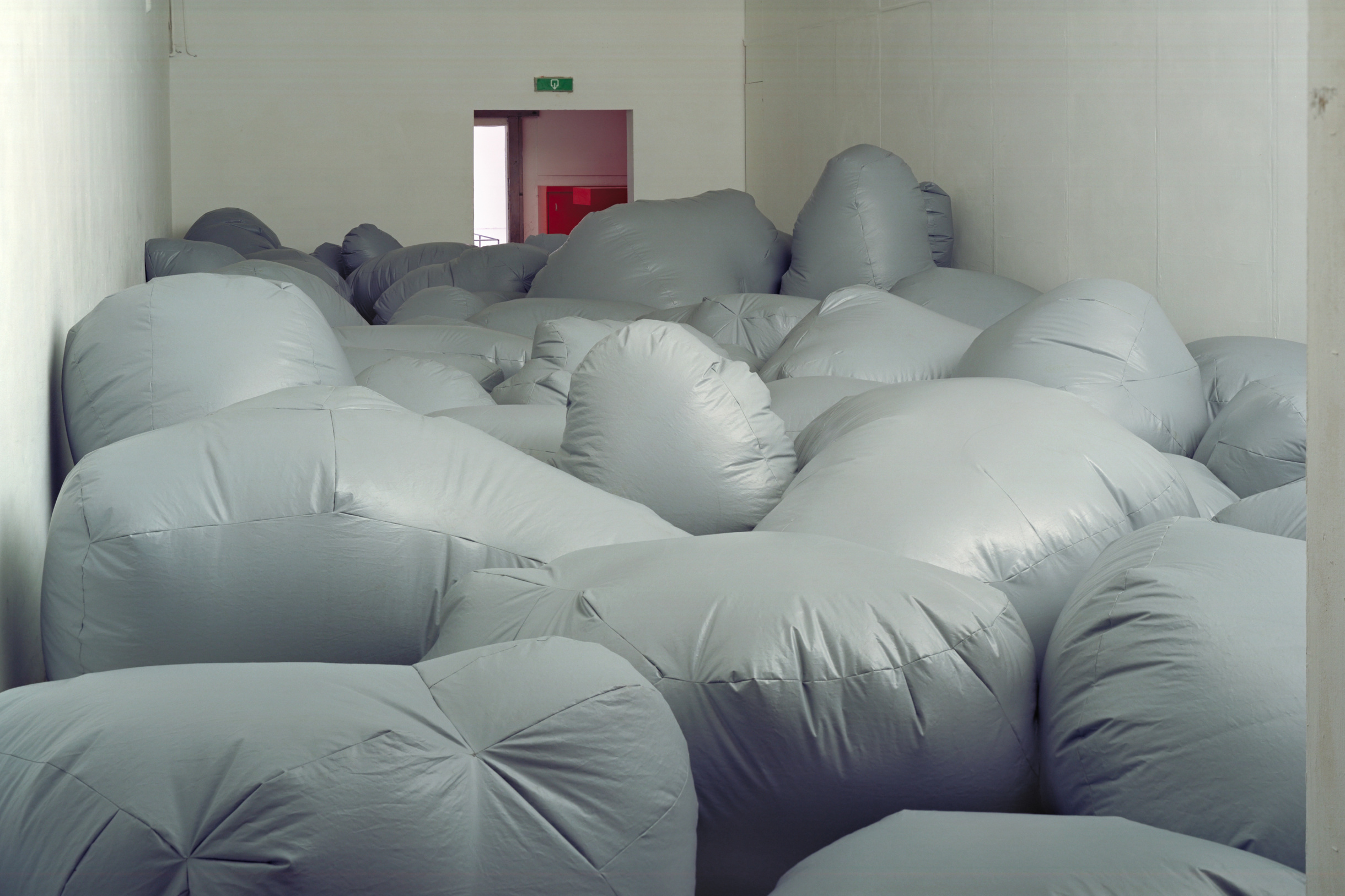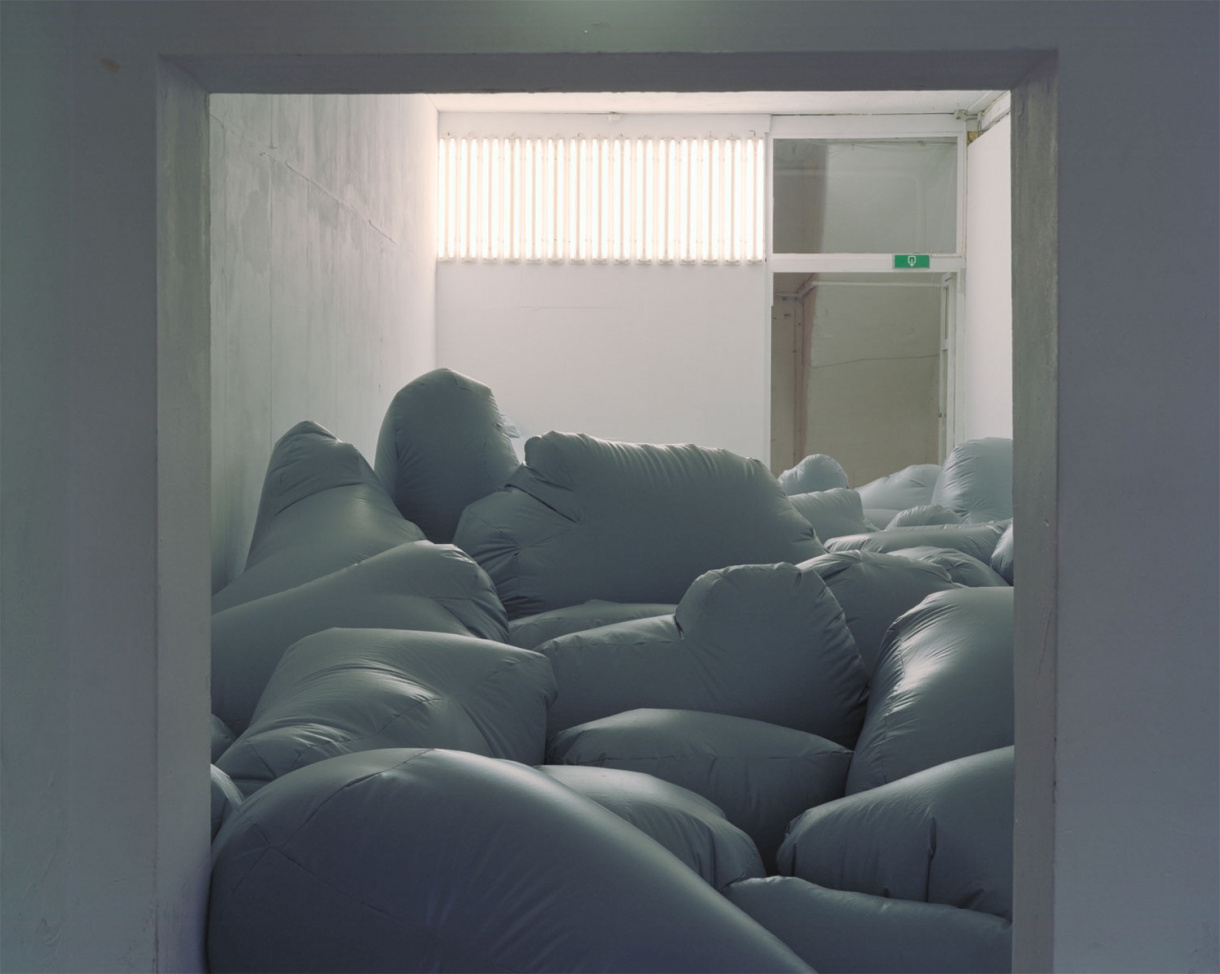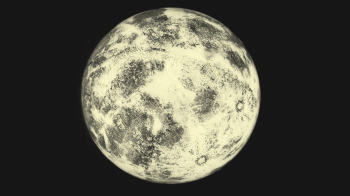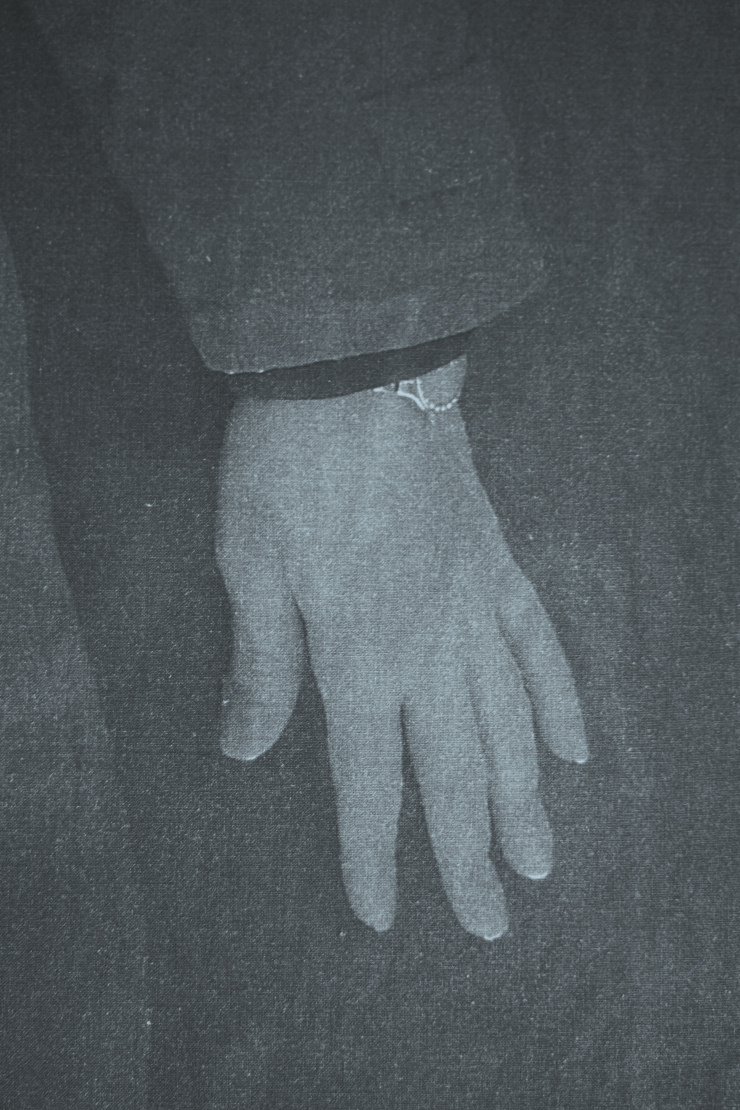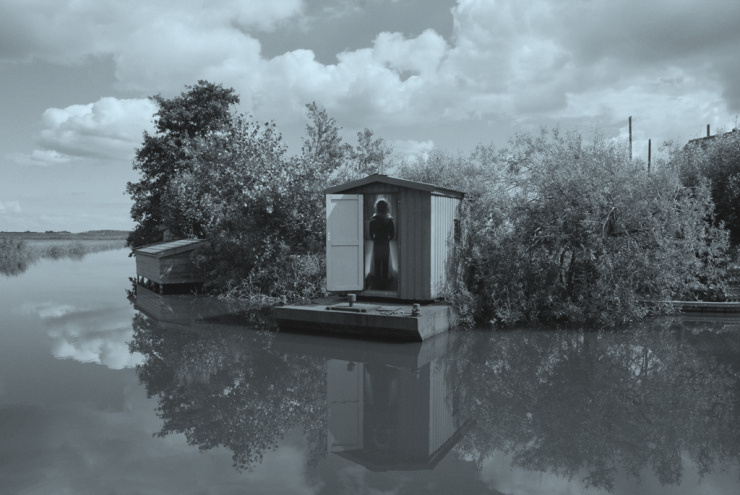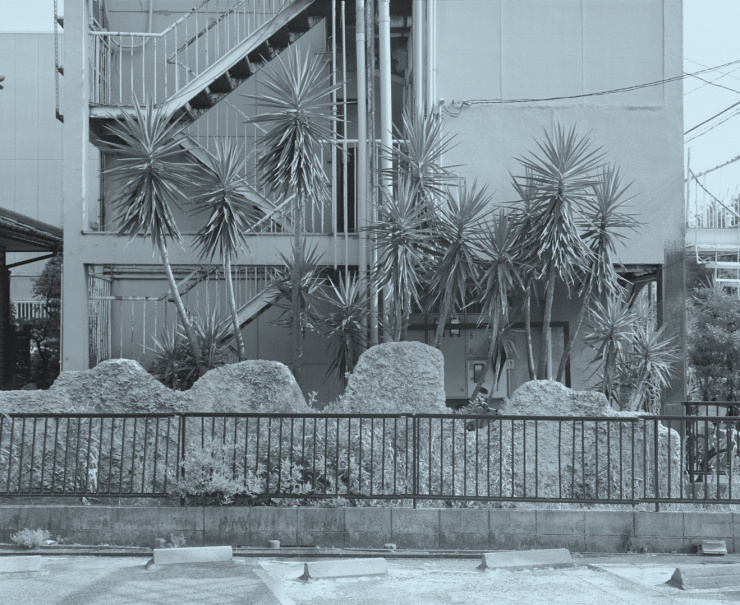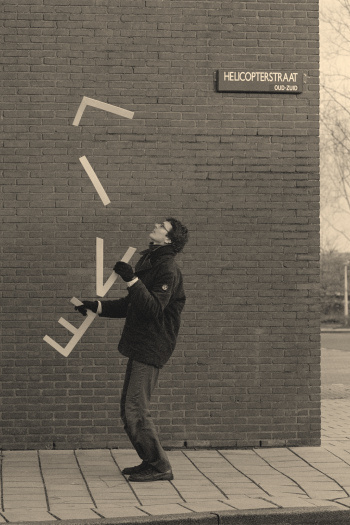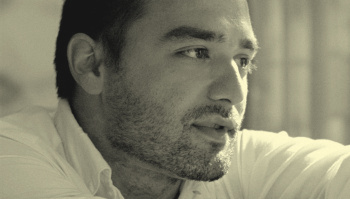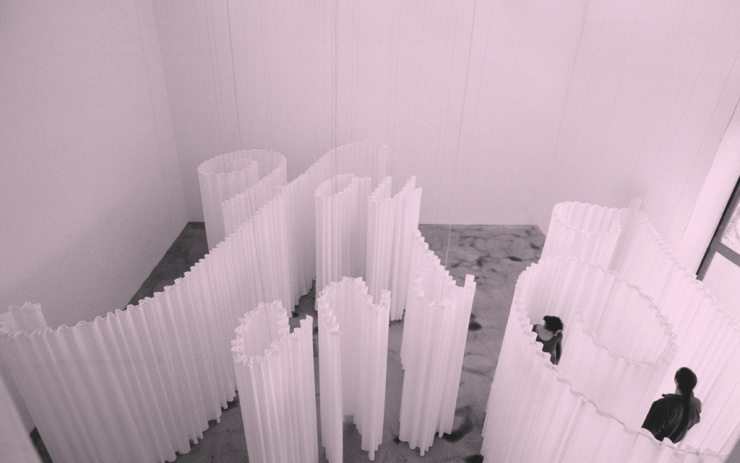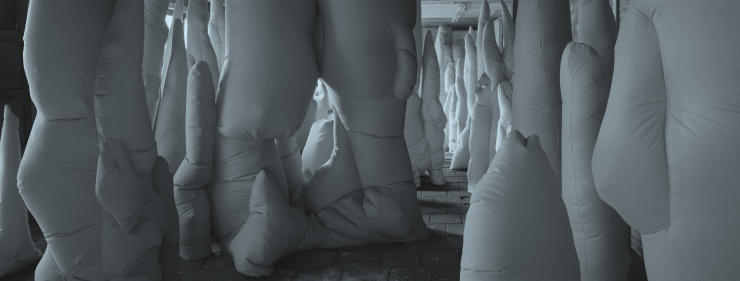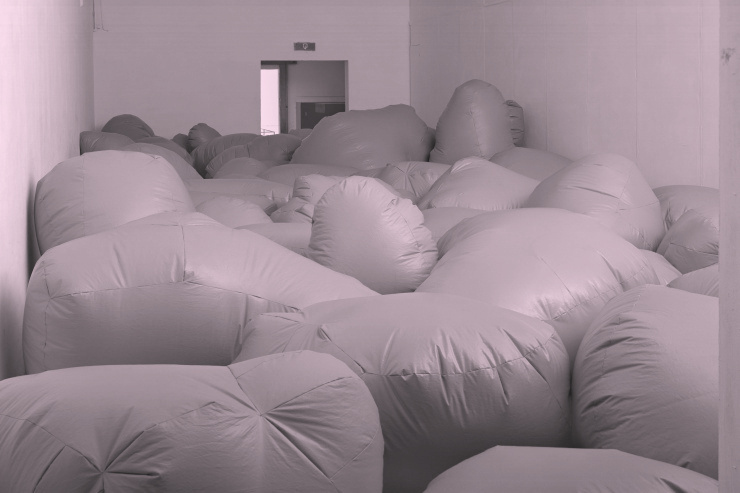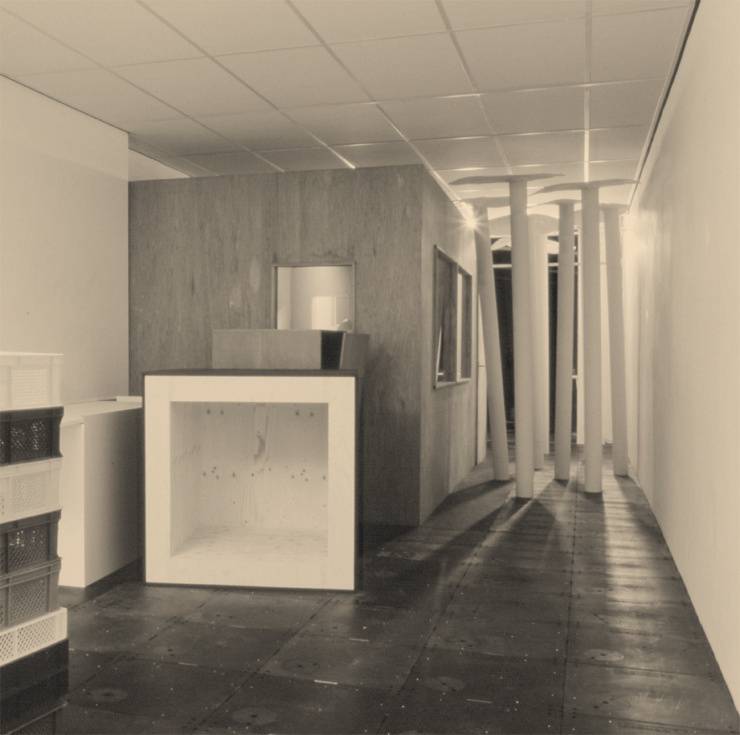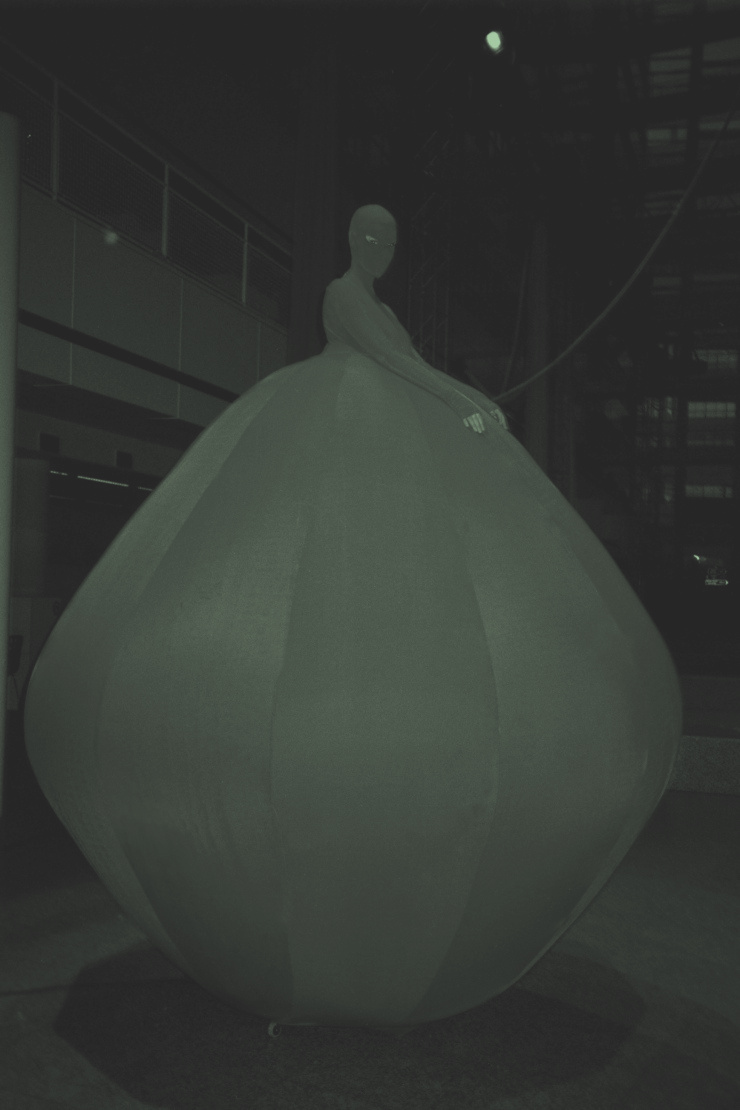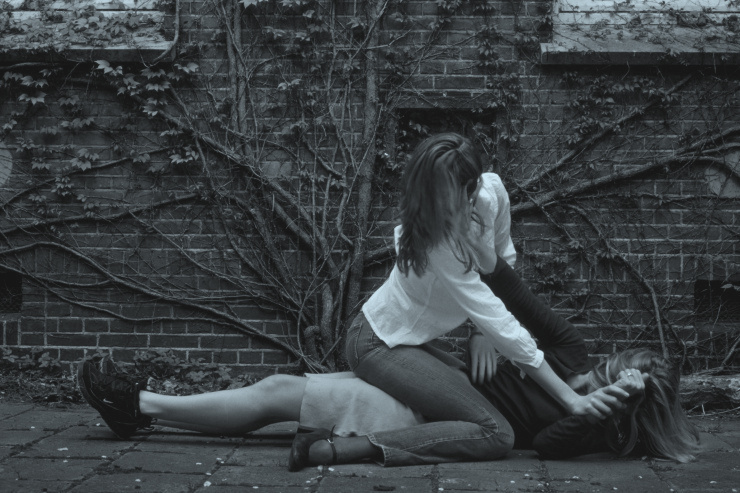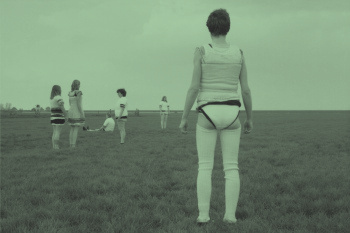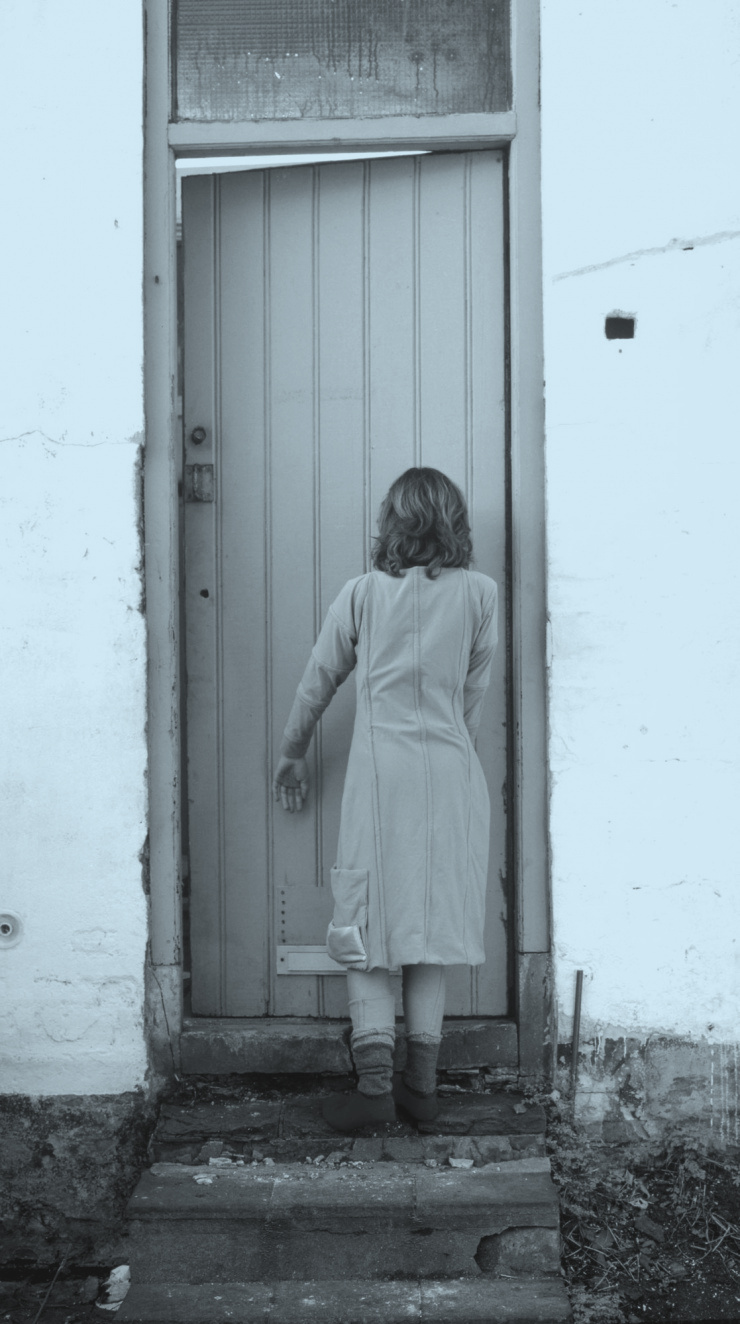2002, site-specific installation, 5,5 x 14 meter, inflatable landscape, 30 fluoresce lights, compressed air
Commissioned by W139, Amsterdam, The Netherlands
‘Lisca Bianca’ is the splendid title of an elaborate and ambitious installation that was developed especially for the front room. The young artist Yasmijn Karhof, who has made a number of inflatable works and costumes, has constructed a landscape out of compressed air.
‘Lisca Bianca’ is also the name of a small Italian island which is part of the Aeolian Islands. Aeolian is a geological term for 'rock formed by the wind'.
The installation consists of a great many 'rocks' filled with a continuous flow of compressed air, which together form a desolate coastal landscape. The viewer walks and clambers through the landscape, in this way himself becoming part of the piece. Boulders and stones in various sizes make up a microcosm, almost the transported excerpt of a landscape. It is possible to perceive the installation as both a 3D version of encyclopaedic cross-section drawings and as the trigger for memories of trips to similar rocky beaches. Landscapes where a timeless quiet reigns, as if time has come to a still.
For Karhof, the audience is an essential part of the installation. Together they form a single image. Seen from the door, the landscape first unfolds as a picture postcard or a photograph, a purely mental perception. But the viewer does not want to halt there - after all, the front room is itself a transitional space - and will therefore have to surrender to a physical experience: the far from easy trip over and between the 'soft rock'. In this way, a dialogue develops between the viewer and the possibilities and limitations of the physical context. The visitor becomes a temporary personage in the landscape, influencing the meaning of the installation by his chosen positioning.
This was duly confirmed during the opening of ‘Lisca Bianca’. After some initial hesitancy on the part of the audience, the work finally became a magnificent 'kiddie castle', in part because visitors discovered the large rocks served as excellent launch pads. Many were treated to a 'Sprung aus den Wolken', which brought another exciting aspect of the installation to bear; apart from the afore-mentioned allusions, the installation had a well-appreciated sense of humour. It was simply a great adventure. Not often does an artwork strike such a happy balance between apparently conflicting aspects and meanings. A dazzling, enjoyable sensation, as full as life itself.
'Once the Aeolian islands were many volcanoes.'
'What's the name of this one?'
'this should be Basiluzzo.'
'Basiluzzo... it sounds like the name of a fish.'
'That one there is Lisca Bianca.'
'How boring. Why all this fuss over a swim.'
'Aren't you going ashore?'
'Are you calling these rocks a shore?'
(From; 'l'Avventura' van Michelangelo Antonioni)
Jean-Bernard Koeman, 2002
Text NL 
LISCA BIANCA
Jean-Bernard Koeman
In: 'Wij Bouwen Nieuwe Zinnen', uitgegeven door W139 in 2002
‘Lisca Bianca’ is de fraaie titel van een speciaal voor de voorzaal gemaakte doorwrochte en ambitieuze installatie. De jonge kunstenaar Yasmijn Karhof, maker van eerdere opblaaswerken en -kostuums, bouwt een landschap van perslucht.
‘Lisca Bianca’ is tevens de naam van een klein Italiaans eiland dat een onderdeel vormt van de Eolische Eilanden. Eolisch is een geologische term voor 'door de wind gevormd gesteente'.
De installatie bestaat uit een groot aantal met constante perslucht gevulde 'stenen' die tezamen een desolaat strandlandschap vormen. De toeschouwer wandelt en klautert door het landschap heen en wordt zodoende eveneens onderdeel van het geheel. Rotsblokken en keien van diverse grootte vormen een microkosmos, welhaast een getransporteerde uitsnede van een landschap. De installatie is wellicht zowel te beleven als een 3D-versie van doorsnedetekeningen uit een encyclopedie, als een motor voor herinneringen aan een reis naar gelijkaardige rauwe keienstranden. Landschappen waar een tijdloze verstilling heerst, alsof de tijd bevroren is.
Voor Karhof is het publiek een wezenlijk onderdeel van de installatie. Ze vormen samen één beeld. Vanuit de deuropening ontvouwt het landschap zich eerst als een ansichtkaart of een foto, een mentale perceptie. Maar de toeschouwer wil ook verder, de voorzaal is tenslotte ook een transitruimte, en zal zich dienen over te geven aan een fysieke ervaring; de niet zo eenvoudige tocht over en tussen het 'zachte gesteente'. Zo ontstaat een dialoog met de mogelijkheden en beperkingen van de fysieke context. Het publiek wordt tijdelijk figurant en stuurt door haar positionering de betekenis van de installatie.
Dit werd fraai bewaarheid op de opening. Na enige aarzeling in de beginuren werd het werk uiteindelijk gebruikt als een machtig springkasteel. Dit mede door de ontdekking dat de grote stenen als lanceerplatform gebruikt konden worden. Zo is menig bezoeker op een ‘Sprung aus den Wolken’ getrakteerd. Hiermee ontvouwde zich nog een boeiend aspect van de installatie; naast alle bovengenoemde inhoudsvolle connotaties had het werk ook een veel geprezen humoristische inslag. Het was simpelweg een leuk avontuur. Het komt niet vaak voor dat een kunstwerk zoveel schijnbaar tegengestelde aspecten en betekenissen in zich verenigt. Een stralende en genietbare sensatie, vol als het leven zelf.
'Once the Aeolian islands were many volcanoes.'
'What's the name of this one?'
'this should be Basiluzzo.'
'Basiluzzo... it sounds like the name of a fish.'
'That one there is Lisca Bianca.'
'How boring. Why all this fuss over a swim.'
'Aren't you going ashore?'
'Are you calling these rocks a shore?'
(From; 'l'Avventura' van Michelangelo Antonioni)
Read less

